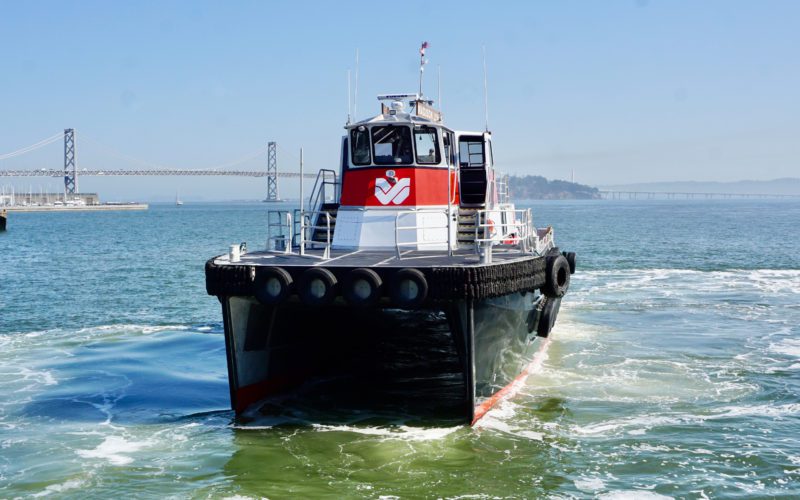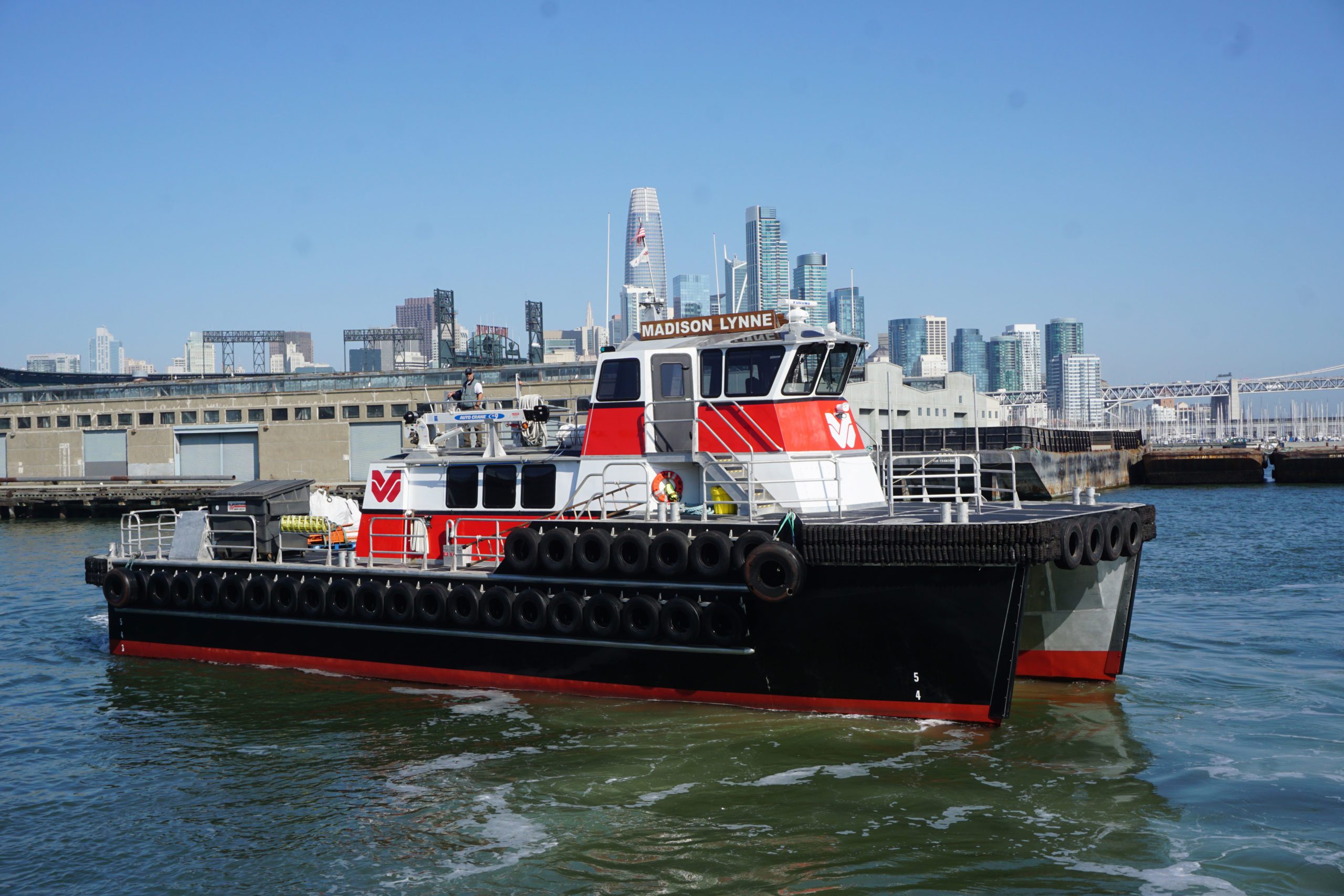
Westar Marine adds speed and capacity with first-ever newbuild
Westar Marine Services has been a fixture on the San Francisco waterfront for more than 40 years. Madison Lynne, a new versatile launch boat that entered service over the summer, is the company’s first ever newbuild.
Moose Boats of nearby Vallejo, Calif., delivered the 75-foot crew boat using an Incat Crowther design. The versatile vessel is named for the daughter of Eric Morrow, operations manager for the company founded by his grandfather in 1976.
Madison Lynne can carry more cargo than Westar’s other launch vessels, and it can hold more people more comfortably than those older steel monohulls. The catamaran platform is more stable alongside a ship or underway in rough weather, and it draws just 3.25 feet.
Madison Lynne is extremely maneuverable thanks to twin Volvo Penta IPS pods that can be controlled at slow speeds using a joystick. It’s also more fuel efficient and faster than the other launches in the fleet.
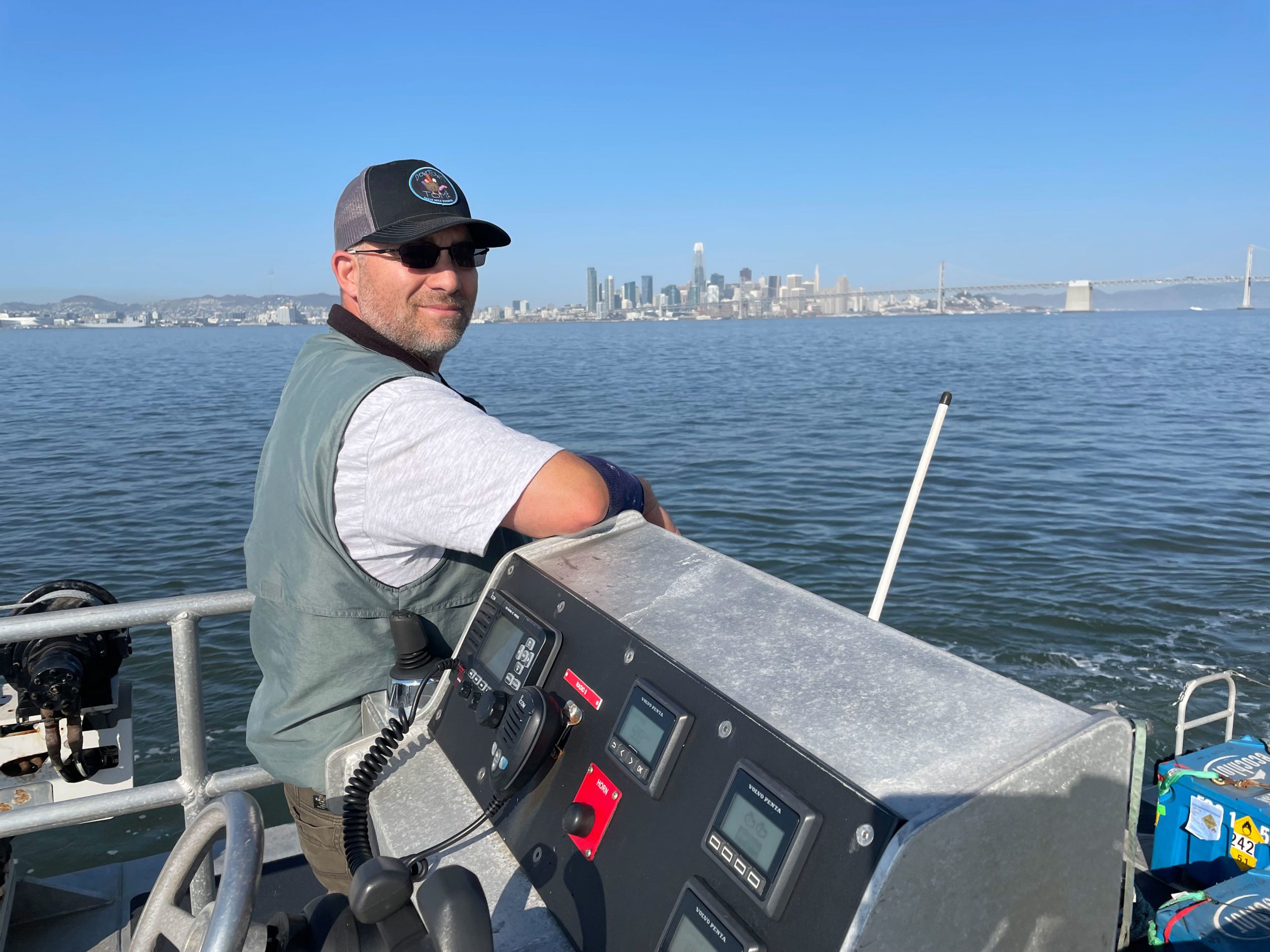
“That’s another thing about this boat — it’s fast,” longtime Westar Capt. Julio Barba said of its 27-knot top speed. “We can get twice as much work done because of its speed.”
Buzz Heffron started Westar Marine in 1976 after trading in the family sailboat for a tugboat he used for towing jobs around the harbor. A year later, the company began delivering stores to anchored ships. It bought its first water taxi, Provider, in 1983 and began carrying passengers around San Francisco Bay.
These days, the company does a little of everything using a fleet of eight tugboats, four water taxis and 13 barges operating from Pier 50. Those vessels have been used on some notable construction projects, including the 20-year construction of a new San Francisco-Oakland Bay Bridge section following the infamous 1989 Loma Prieta earthquake.
Westar tugs supply Alcatraz Island with nearly all its necessities, and company barges stage fireworks and celebrations on holidays and around San Francisco Giants games at nearby Oracle Park. The company also performs coastal towing and dredging support around the region.
Westar’s warehouse is a hub for stores, replacement parts and various other cargoes bound for ships anchored in the Bay. It even accepts Amazon packages from crewmembers aboard oceangoing vessels looking to stock up on one thing or another. Footage used in blockbuster movies has been filmed from the aft deck of Westar vessels.
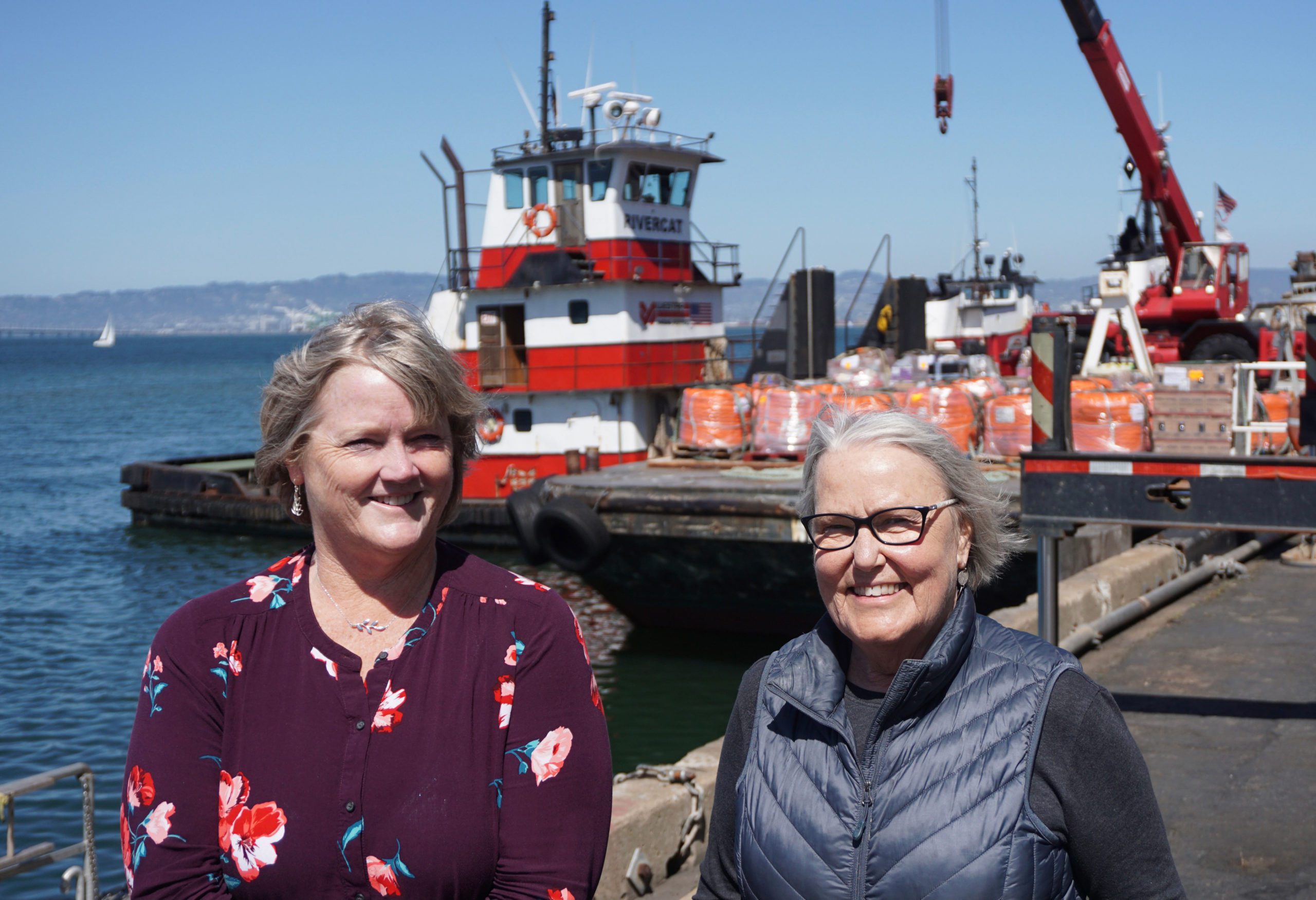
Westar is also the rare maritime company owned and operated by women. Its leadership team includes President Mary McMillan-Sherfy and Vice President Wendy Morrow.
The age of its existing fleet drove the decision to build a new crew boat, McMillan-Sherfy said. Costs associated with maintaining its launch fleet rose as the vessels got older.
“It just made sense to reinvest and get something new,” she said in a recent interview, adding that the company had an existing relationship with Moose Boats and its owners. “They approached us about building a new boat and it just made sense because we were kind of at that point ourselves.”
For almost a year, the different project partners worked together on a design that built on what already worked, but one with modern improvements and more efficiencies than its existing fleet of 65-foot steel boats. “We figured out how to make a better box,” McMillan-Sherfy said. “What we had worked and we just wanted to improve upon them.”
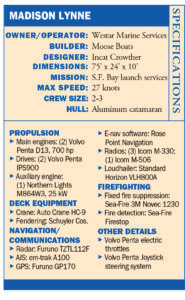 Westar had several key requirements for the new vessels during that brainstorming period. First, the company wanted to limit fuel consumption and increase speed. Adding more deck space and comforts for passengers were also high on the list.
Westar had several key requirements for the new vessels during that brainstorming period. First, the company wanted to limit fuel consumption and increase speed. Adding more deck space and comforts for passengers were also high on the list.
Madison Lynne, the company’s first catamaran, hit those marks — particularly around maneuverability, stability and speed. “Westar is very pleased with its … fuel consumption and overall performance of the boat,” Eric Morrow said.
Madison Lynne’s aft deck serves as its primary working space. The vessel can hold 16,000 pounds of cargo within a 250-square-foot open deck. Cargo can be unloaded onto other vessels using its Auto Crane HC-9 installed atop the passenger compartment. The crane has a 9,000-pound lifting capacity and more than 20-foot reach when fully extended. The hull is protected by airplane tires and Schuyler Cos. fendering for added cushion when alongside a ship.
The passenger cabin has seating for 25, and the vessel is certified to carry 28 people. Each seating row has plugs for phone charging and storage under the seats for personal items. There is a full head and a crew lounge with a kitchenette and coffee station — two amenities that are not present on Westar’s other launches.
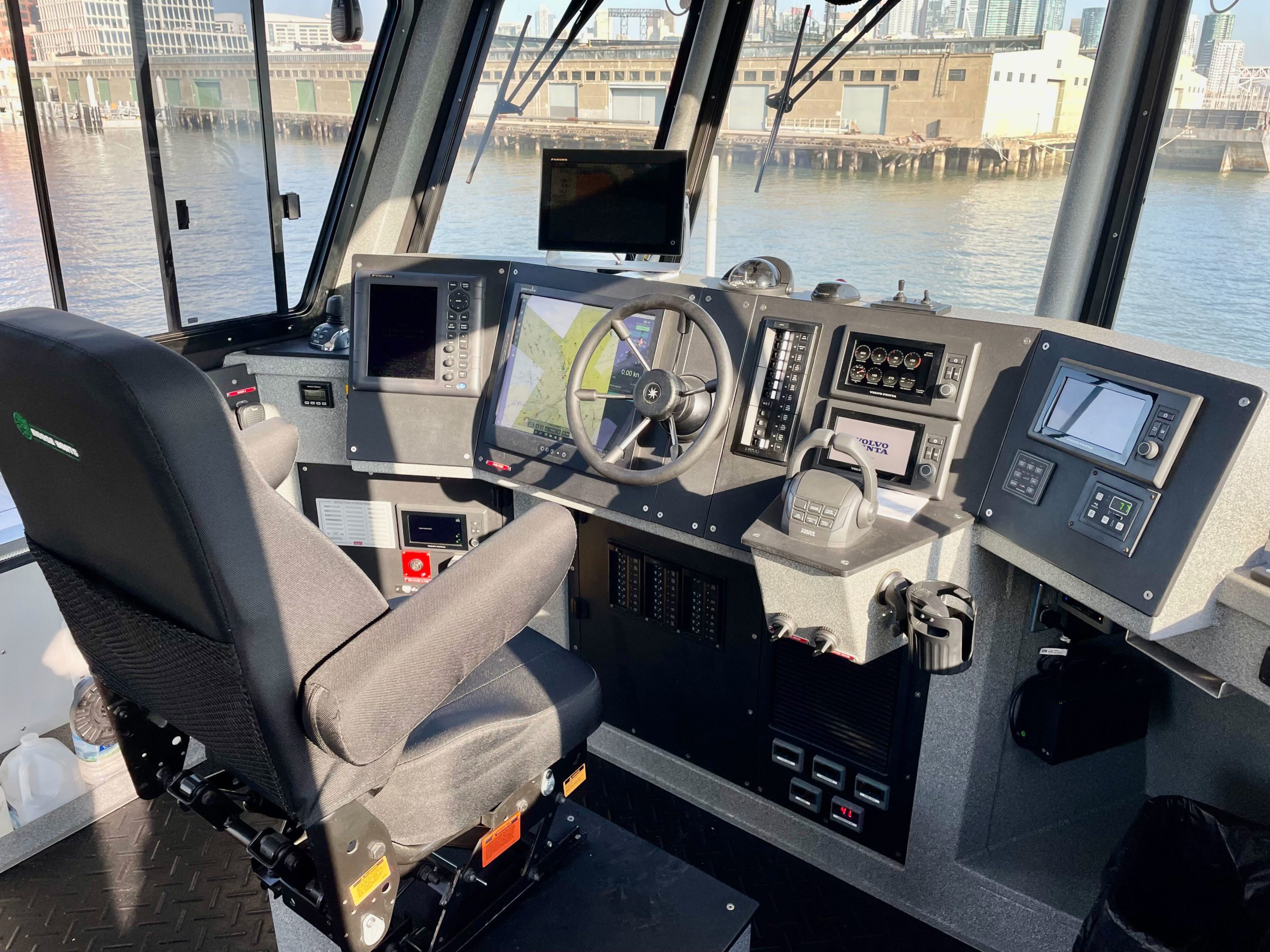
Stairs on the port side lead to the spacious wheelhouse designed for a single operator. Large windows and an 18.5-foot height-of-eye improve visibility significantly compared to the other launches. Navigation electronics include Furuno radars and GPS, em-trak AIS and Rose Point navigation software displayed on a Green Marine monitor.
The vessel has a primary steering station in the wheelhouse as well as Volvo Penta joystick controls on the starboard and port sides for precision maneuvering. The aft steering station also has a joystick system, along with Volvo Penta electronic throttles found in the wheelhouse.
“That right there is the best part of this boat,” Barba said. “You can make it twist and turn right on a dime.”
The joystick controls come in handy when steering alongside a ship to unload cargo. Barba uses them to remain locked against ships’ hulls during the unloading process, which can last anywhere from 20 minutes to more than an hour.
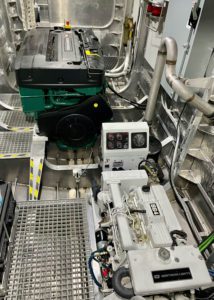
The propulsion system consists of 700-hp Volvo Penta D13 engines in each hull that are paired with Volvo Penta IPS900 pods through a straight shaft. One 25-kW Northern Lights generator in the port hull provides ship service power. Sea-Fire supplied the 3M Novec 1230 fire suppression and fire detection systems.
Madison Lynne has tankage for 1,200 gallons of fuel that equates to a range of about 400 nautical miles. It also can hold 150 gallons of fresh water. Two HVAC systems provide heating and cooling to the wheelhouse and passenger spaces to keep pace with San Francisco’s fast-changing weather.
Moose Boats is based about 30 miles north of San Francisco. It specializes in high-performance aluminum vessels used by law enforcement and fire departments around the United States. Madison Lynne is the biggest boat it has ever delivered, and a model it hopes will one day be used for crew transfers supporting offshore wind power installations.
“This build was a great collaborative effort between Westar, Incat Crowther, Helmut’s Marine, Volvo Penta and Moose Boats,” Moose GM Steve Dirkes said in a statement issued following the June 2022 delivery. “To see a boat of this size walk sideways without any bow thrusters is pretty incredible and a testament to the Volvo Penta IPS drives.”
“We appreciate Westar choosing us for this build,” Dirkes continued, “and hope they are as happy with their new boat as we are to have built it.” •

